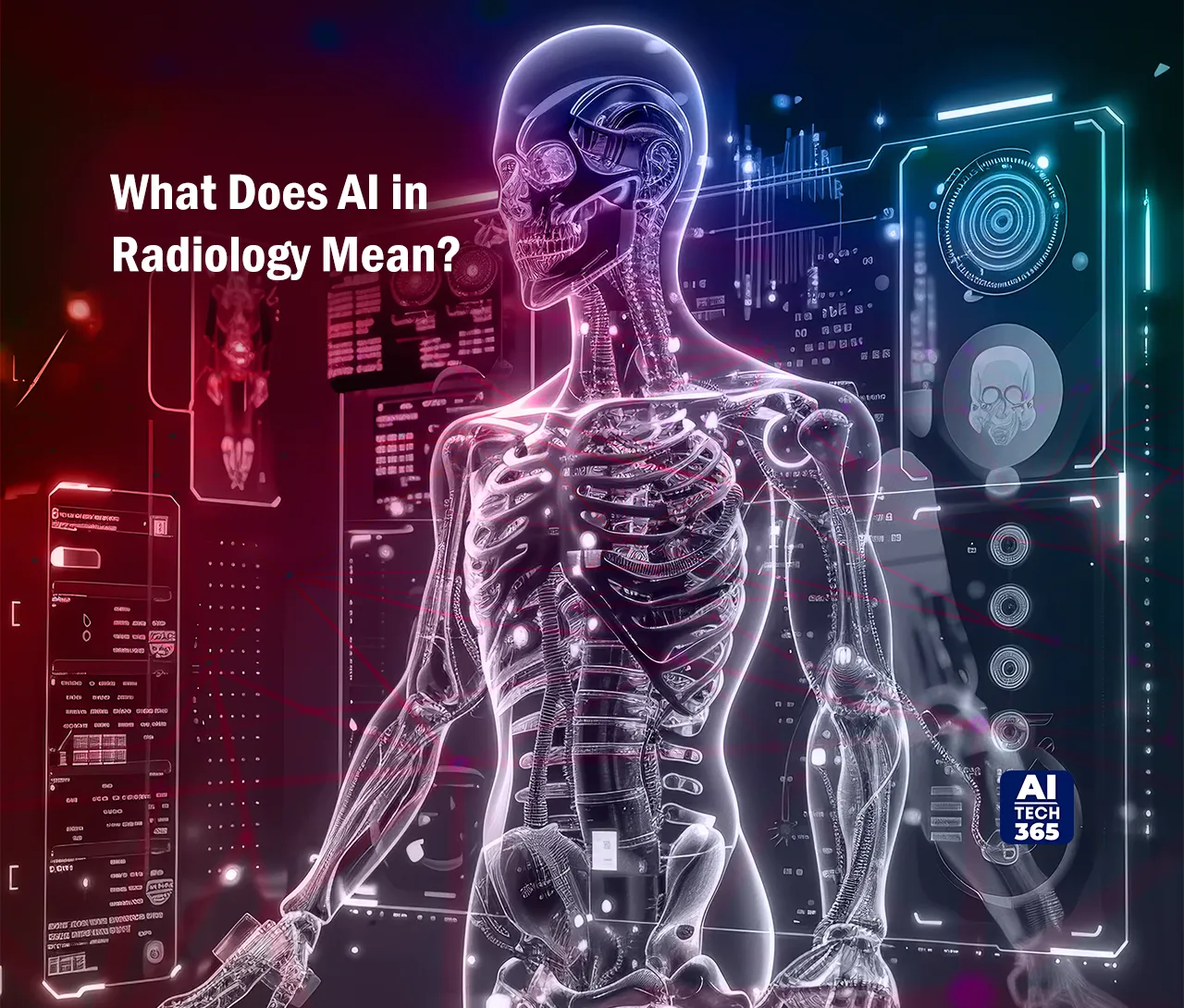Imagine a world where doctors can diagnose diseases accurately, predict health outcomes with uncanny precision, and personalize treatment plans tailored to each individual—all within minutes. This isn’t science fiction; it’s the incredible reality brought about by integrating artificial intelligence in radiology.
AI algorithms are transforming the landscape of medical imaging analysis and patient care, making it possible to detect anomalies that even the most trained human eyes might miss. According to a 2021 poll conducted by the Journal of American College of Radiology, almost 30% of radiologists were already utilizing AI in their work. This blog discusses AI in the medical field.
What Does AI in Radiology Mean?
AI in radiology refers to the application of artificial intelligence technologies in medical imaging. It involves the use of algorithms and machine learning techniques to assist radiologists in interpreting and analyzing medical images, improving diagnostic accuracy, and enhancing workflow efficiency. AI in radiology has the potential to transform the field by automating routine tasks, detecting abnormalities, and providing decision support to radiologists.
The use of AI in radiology offers several potential benefits for patient care and healthcare providers. It can help radiologists in detecting and diagnosing diseases at an early stage, leading to improved patient outcomes.
How is AI used in Radiology?
- Image Analysis and Interpretation: AI systems are exceptionally proficient at interpreting medical images, including MRIs, CT scans, and X-rays, which help radiologists identify and describe anomalies. These advanced algorithms identify intricate patterns in imaging data automatically, giving quantitative evaluations and identifying possible problem areas. This facilitates the creation of treatment strategies and increases the accuracy of diagnoses. A great example of this is AI in electronic health records (EHR).
- Workflow Optimization: AI significantly optimizes radiology workflows by automating routine tasks and boosting efficiency. For instance, AI-based algorithms can triage and prioritize imaging studies based on urgency, expediting the processing of critical cases. AI also assists in image reconstruction, noise reduction, and image enhancement, which not only improves the quality of diagnostic images but also streamlines the interpretation process.
- Decision Support: AI systems offer robust decision support to radiologists by providing relevant clinical information, past patient data, and evidence-based guidelines during the interpretation process. This comprehensive support helps radiologists make more informed and accurate diagnoses. Additionally, AI models contribute to treatment planning by offering insights drawn from large datasets and clinical guidelines.
- Quantitative Analysis: AI algorithms are capable of extracting quantitative data from medical images, allowing radiologists to objectively assess disease progression, treatment response, and prognosis. This quantitative analysis provides invaluable insights for personalized medicine and patient management. AI also aids in measuring tumor size, monitoring changes over time, and predicting treatment outcomes.
- Quality Control: AI enhances quality control by automatically flagging potential errors or inconsistencies in medical images, ensuring that the images meet the necessary standards for accurate interpretation. AI algorithms also play a crucial role in standardizing imaging protocols and maintaining consistency in image acquisition and interpretation, thereby improving overall diagnostic reliability.
Also Read: Human Intelligence Vs Artificial Intelligence: Who Will Win?
Will AI Take Over Radiology?
No, AI will not completely replace human radiologists. The use of AI in radiology has sparked discussions about the potential for AI to replace radiologists. However, the consensus among experts is that AI will not completely replace radiologists but rather augment their capabilities. AI is expected to enhance the accuracy and efficiency of radiologists by assisting in analyzing medical images, detecting abnormalities, and providing decision support. It can help prioritize cases, improve workflow, and reduce the risk of human error. While AI has shown promise in improving diagnostic accuracy and can achieve comparable or better results in certain cases, there are complex cases and uncommon problems that require the expertise and clinical judgment of radiologists.
Radiologists possess a deep understanding of medical imaging and can integrate AI insights with their knowledge to provide comprehensive patient care. The future of radiology is likely to involve a collaboration between radiologists and AI systems, where radiologists who embrace AI as a tool can enhance their practice and improve patient outcomes. AI can assist with common findings and diagnoses, allowing radiologists to focus on complex cases, provide second opinions, and contribute to more efficient and accurate diagnoses.
What Are The Limitations Of AI In Radiology?
- Pitfalls and Biases: AI algorithms can carry inherent pitfalls and biases. It is crucial to ensure that AI is ethically used in radiology to promote well-being, minimize harm, and distribute benefits and harms in a just manner.
- Workflow Integration: Seamless integration of AI into existing radiology systems is not always guaranteed. Some AI applications do not provide results within the current radiology systems, which can hinder workflow efficiency.
- Complex Cases and Uncommon Problems: AI algorithms may struggle with complex cases and uncommon problems that require the expertise and clinical judgment of human radiologists. The nuanced perception and interpretation skills of radiologists are still essential in these scenarios.
- Data Availability and Quality: AI algorithms require large amounts of high-quality data to train effectively. However, the availability of such data in radiology can be limited, leading to challenges in accuracy and reliability.
- Regulatory Compliance and Privacy: Radiology departments using AI must comply with regulatory requirements to ensure patient privacy and security. Adhering to these regulations can pose challenges in the implementation and use of AI.
Conclusively
In conclusion, AI in radiology holds great promise for the future of medical imaging. While it is not intended to replace radiologists, AI will augment their capabilities, enhancing diagnostic accuracy and improving workflow efficiency. The collaboration between AI and radiologists will lead to improved patient care, faster diagnoses, and more personalized treatment plans. As AI technology continues to advance and integrate into clinical practice, the future of AI in radiology will witness transformative changes, ultimately benefiting both radiologists and patients.





